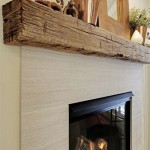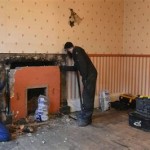How to Dry Stack Stone Fireplace
A dry-stacked stone fireplace adds a rustic and natural element to any home. This technique involves building a fireplace without using mortar, relying solely on the weight and shape of the stones to hold the structure together. While it may appear simple, dry stacking requires careful planning and execution for a stable and visually appealing outcome.
This article will provide a step-by-step guide on how to dry stack a stone fireplace, covering essential considerations, materials, and techniques. By following these instructions, you can create a unique and durable fireplace that will be the focal point of your living space.
Planning and Preparation
Before embarking on the dry stacking process, it's crucial to plan and prepare properly. This involves:
1. Design and Layout: Determine the desired shape, size, and height of your fireplace. Draw a detailed sketch or use a design software to visualize the final structure. Consider the surrounding area and ensure the fireplace's dimensions fit harmoniously within the space.
2. Choose the Right Stone: Select stones that are relatively flat and have irregular shapes. Flat stones provide a stable base, while irregular shapes create visual interest. Consider using a blend of different sizes and textures for added depth and character. The chosen stone type should weather well and be suitable for outdoor use.
3. Site Preparation: Clear the area where you'll build the fireplace, ensuring a level foundation. If necessary, compact the soil or use a gravel bed for additional stability. The foundation should be wider than the base of the fireplace to prevent any potential toppling.
4. Fire Safety: Consult with local building codes and fire safety regulations to ensure your fireplace meets the necessary requirements. Consider installing a firebox or using a prefabricated firebox to ensure a safe and efficient burning area. Remember to provide ample clearance between the fireplace and any combustible materials.
Dry Stacking Techniques
Dry stacking involves carefully arranging stones without mortar, using gravity and interlocking shapes to create a stable structure. Here's a breakdown of the process:
1. Laying the Foundation: Start by laying a course of large, flat stones to form the base of the fireplace. These stones should be stable and level, providing a solid foundation for the subsequent layers.
2. Stacking the Stones: Begin stacking the stones, carefully selecting each piece to create a visually pleasing arrangement. Interlock the stones, ensuring that they are tightly fitted and supported by their weight. Avoid using excessive force, as you want to maintain the natural beauty of the stones.
3. Shimming and Adjusting: Use shims (small wedges) to adjust the position of stones and create a level surface between each layer. This helps ensure stability and prevents uneven settling over time.
4. Creating Openings: If you are incorporating a firebox, carefully cut or shape the stones to create the desired opening. Ensure that the opening is sufficiently large for the firebox and allows for proper airflow.
5. Building the Mantle: The mantel is the horizontal stone that sits above the fireplace opening. It can be a single, large stone or a combination of smaller stones. When placing the mantel, ensure it is securely supported by the stones below.
6. Finishing Touches: Once the fireplace is built, you can add finishing touches like a capstone or decorative features. These elements can enhance the overall aesthetic appeal and reflect your personal style.
Essential Considerations
Dry stacking requires attention to detail and an understanding of the principles of stability and weight distribution. Here are some crucial considerations that can contribute to a successful outcome:
1. Stability and Weight Distribution: As you stack the stones, consider the weight distribution and ensure each layer is adequately supported by the stones below. Avoid any potential for tipping or instability.
2. Aesthetics and Alignment: Dry stacking allows for creativity and visual appeal. Experiment with different stone shapes and sizes to create a unique design. Pay attention to the alignment of the stones, ensuring a consistent and aesthetically pleasing look.
3. Weather Protection: If your fireplace is exposed to the elements, consider using sealant or weatherproofing treatments to protect the stones from erosion. By taking preventative measures, you can extend the lifespan of your dry stacked fireplace.
Dry stacking a stone fireplace is a rewarding and impactful project that can add character and warmth to your home. With careful planning, proper techniques, and attention to detail, you can build a durable and visually stunning fireplace that will be enjoyed for years to come.

Dry Stack Vs Mortar Joints The Cultured Stoners

Dry Stack Vs Mortar Joints The Cultured Stoners

How To Update Your Fireplace With Stone Evolution Of Style

Dry Stack Vs Mortar Joints The Cultured Stoners

Dry Stacked Stone Fireplace Fireplaces Remodel Home

Dry Stack Stone Fireplaces Superb Craftsmanship Centuries In The Making

Dry Stack Stone Fireplaces Superb Craftsmanship Centuries In The Making

Dry Stack Stone Fireplaces Superb Craftsmanship Centuries In The Making

How To Build An Outdoor Stacked Stone Fireplace

Costa Ledge Drystack Ledgestone Blue Grey Ledger Stone
Related Posts








